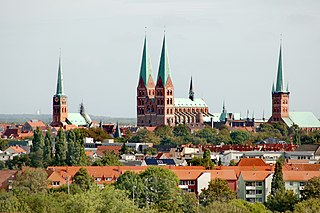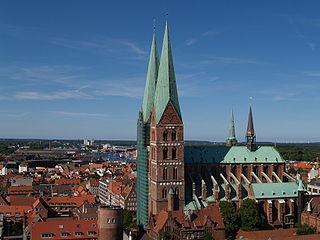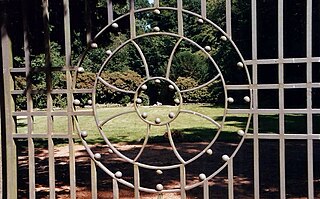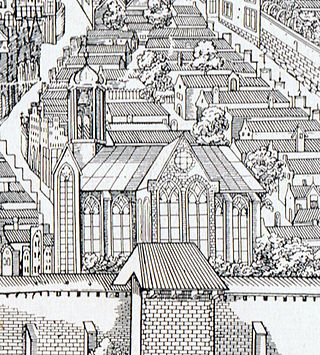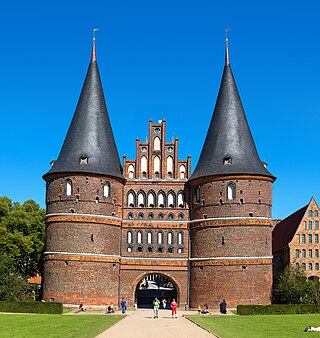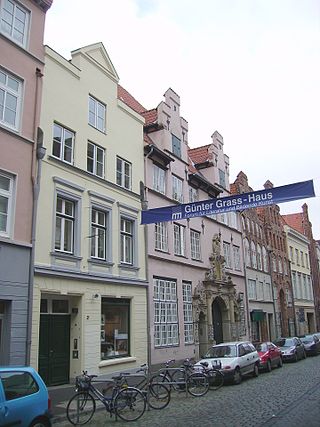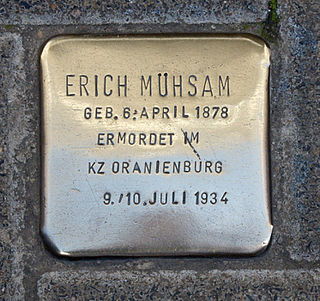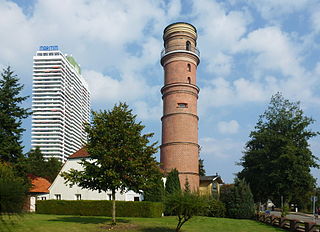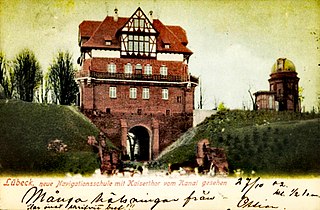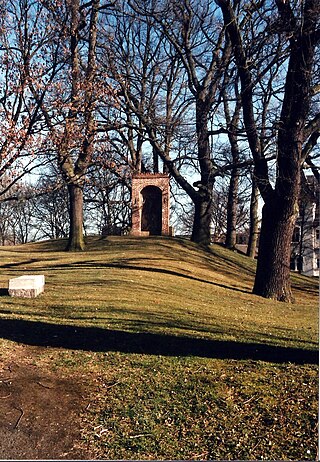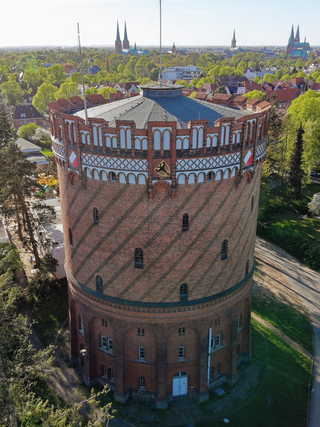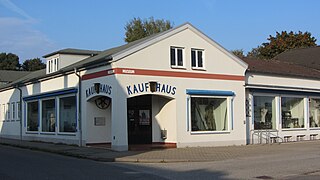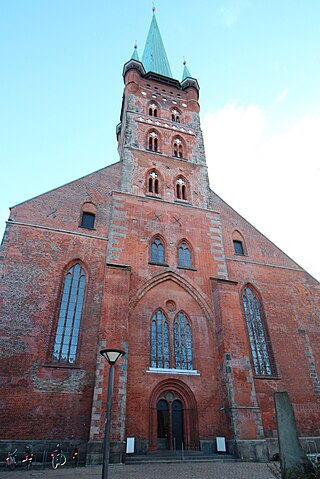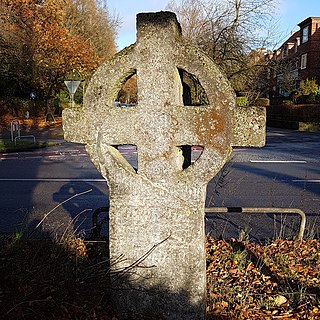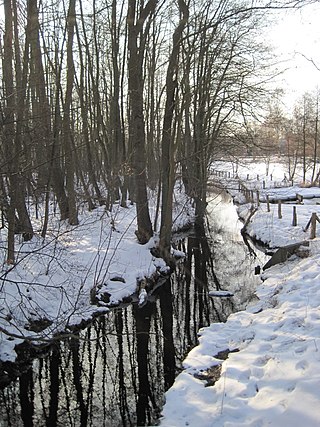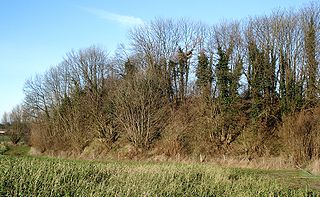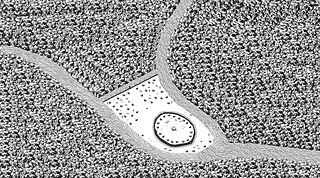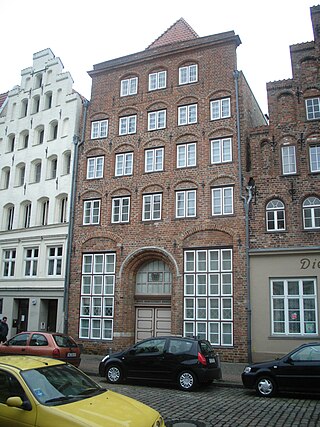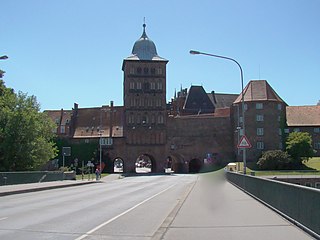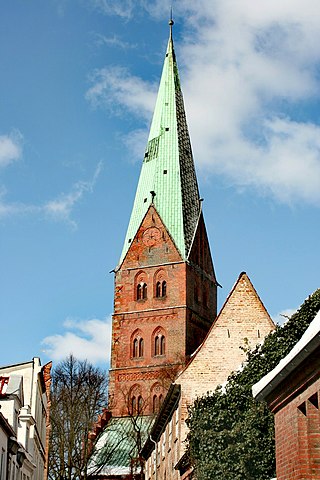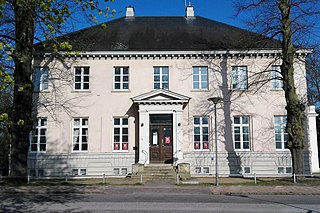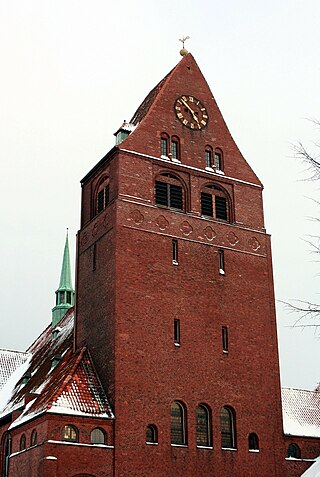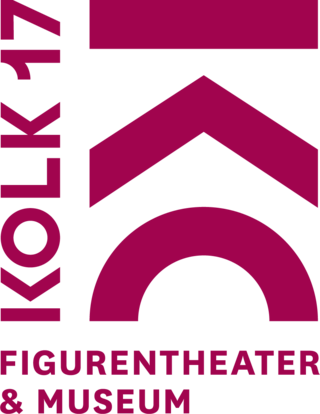33 Sights in Lübeck, Germany (with Map and Images)
Legend
Premium Sights
Book tickets, guided tours and activities in Lübeck.
Guided Free Walking Tours
Book free guided walking tours in Lübeck.
Welcome to your journey through the most beautiful sights in Lübeck, Germany! Whether you want to discover the city's historical treasures or experience its modern highlights, you'll find everything your heart desires here. Be inspired by our selection and plan your unforgettable adventure in Lübeck. Dive into the diversity of this fascinating city and discover everything it has to offer.
Sightseeing Tours in Lübeck1. Lübeck
Lübeck, officially the Hanseatic City of Lübeck, is a city in Northern Germany. With around 220,000 inhabitants, it is the second-largest city on the German Baltic coast and the second-largest city in the state of Schleswig-Holstein, after its capital of Kiel. It is the 36th-largest city in Germany.
2. St. Mary's Church
The Lübeck Marienkirche is a medieval basilica in the city centre of Lübeck, Germany. Built between 1265 and 1352, the church is located on the highest point of Lübeck's old town island within the Hanseatic merchants' quarter, which extends uphill from the warehouses on the River Trave to the church. As the main parish church of the citizens and the city council of Lübeck, it was built close to the town hall and the market.
3. Doktor Julius Leber
The Cemetery of Honour is a central memorial in Lübeck for the civilian and military victims of both world wars. It is about five hectares (50,000 m2) in size, includes 1882 graves and about 500 memorial stones. It is located on Travemünder Allee at the intersection of Sandberg/Heiligen-Geist-Kamp and opposite the Burgtorfriedhof.
4. St. Johannis Jungfrauenkloster
The St. John's Monastery in Lübeck was founded as a Benedictine monastery by Bishop Henry I at the time of Henry the Lion and dedicated to John the Evangelist in 1177. It belonged to the diocese of Lübeck. After it was a double convent in the meantime, it was converted into a Cistercian convent in 1246 and continued as a virgin convent after the Reformation until 1803.
5. Heiligen-Geist-Hospital
Completed in 1286, the Holy Spirit Hospital on the Koberg in Lübeck is one of the oldest existing social institutions in the world and one of the most important buildings in the city. It is in the tradition of the Holy Spirit hospitals based on the model of Santo Spirito in Sassia in Rome.
6. Holsten Gate
The Holsten Gate is a city gate marking off the western boundary of the old center of the Hanseatic city of Lübeck. Built in 1464, the Brick Gothic construction is one of the relics of Lübeck's medieval city fortifications and one of two remaining city gates, the other being the Citadel Gate (Burgtor). Known for its two-round towers and arched entrance, it is regarded today as a symbol of the city. Together with the old city centre (Altstadt) of Lübeck it has been a UNESCO World Heritage Site since 1987.
7. Günter-Grass-Haus
The Günter Grass House is a building and museum in Lübeck's old town dedicated to the literary, painterly and sculptural work of the Nobel Prize winner for literature Günter Grass, who lived near Lübeck in his old age. The sponsor of the house, which opened in October 2002, is the Cultural Foundation of the Hanseatic City of Lübeck.
8. Anna Daicz geb. Finkelberg
The list of stumbling blocks in Lübeck gives an overview of the stumbling blocks laid by the artist Gunter Demnig in the city of Lübeck. The basis of this list is the data provided by the Stumbling Stones initiative for Lübeck.
9. Alter Leuchtturm Travemünde
Today, the historic lighthouse of Travemünde is no longer important as a technical and architectural cultural monument as a sea mark, but is a landmark and museum for Travemünde together with the Passat.
10. Cathedral
Lübeck Cathedral is a large brick-built Lutheran cathedral in Lübeck, Germany, and part of the Lübeck World Heritage Site. It was started in 1173 by Henry the Lion as a cathedral for the Bishop of Lübeck. It was partly destroyed in a bombing raid in World War II (1942), when the Arp Schnitger organ was destroyed by fire, but was subsequently reconstructed.
11. Sternwarte Lübeck
The Lübeck Observatory is a school and public observatory operated by the Arbeitskreis Sternfreunde Lübeck e.V. Until its demolition at the beginning of 2017, it was located on the roof of the Johannes Kepler School on Ährenfeld. A new location has been found at the Grönauer Baum school. It cooperates with the Lübeck University of Applied Sciences.
12. Museumshafen
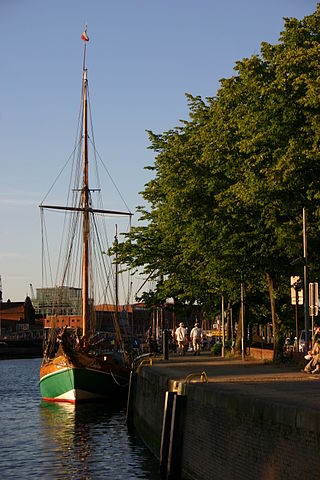
The Museum Harbour Lübeck is located on the Wenditzufer directly on the northwestern edge of Lübeck's old town island, actually in the Holstenhafen between the listed swing bridge at the Engelsgrube and the Lübeck Music and Congress Hall. In winter, when the vintage cars are moored, this inner museum harbour is most frequented. In addition to many old cargo sailing ships typical of the Baltic Sea, a dredging ship and a tugboat are also part of the inventory. In summer, however, due to the failure-prone swing bridge, many museum ships are preferably moored on the other side and north of it in the outer museum harbour, the Hansahafen, directly in front of the Media Docks on the Wall peninsula.
13. Ende des Kreuzweges
The Lübeck Way of the Cross is one of the oldest of its kind in Germany and has been walked again since 1994. Of the seven stations of the 1650-metre-long path created towards the end of the 15th century, only the first and last, beginning and end of the Stations of the Cross have been preserved.
14. Trägerstecksperre
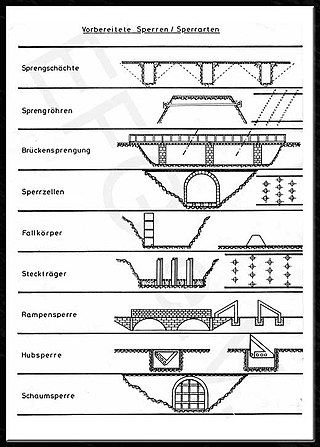
Prepared barriers are military-style devices on traffic facilities that, once triggered, are intended to slow down and channel an opponent's attack. A common form of prepared barriers are blast shafts.
15. Wasserkunst
The Lübeck Waterworks is located in the St. Jürgen district of the Hanseatic city of Lübeck directly on the Wakenitz. The central building is the water tower, which, as a historicist building, takes up the design language of brick Gothic. It was built in 1867 and extended in 1890.
16. Kolosseum
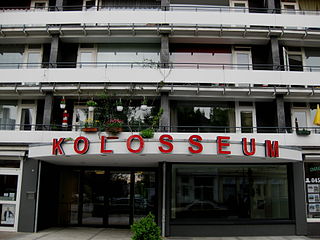
The Colosseum is a listed concert, theatre and event hall in the Hanseatic city of Lübeck (Schleswig-Holstein). The hall in the St. Jürgen district belongs to the Society for the Promotion of Non-Profit Activities, which was founded in 1789.
17. Geschichtswerkstatt Herrenwyk
The Herrenwyk History Workshop Industrial Museum in the former department store of the Hochofenwerk Lübeck AG in Lübeck-Herrenwyk documents the work in the blast furnace plant and the life of the workers in the factory colony, with a focus on the 1920s and 1930s, as well as the rise and fall of the Flender shipyard. The History Workshop researches and presents Lübeck's industrial culture and workers' culture as a whole. The museum is under the management of the Cultural Foundation of the Hanseatic City of Lübeck. The history of the museum began with an exhibition in 1983 by the former Museum of Art and Cultural History of the Hanseatic City of Lübeck. The great success of the exhibition on Lübeck's working-class culture led to the department store being permanently operated as a museum with permanent and special exhibitions. Since the summer of 2017, the museum has been headed by Bettina Braunmüller, modern archaeologist and folklorist.
Wikipedia: Industriemuseum Geschichtswerkstatt Herrenwyk (DE), Website, Url
18. St.-Petri Kultur- und Universitätskirche
St. Peter's Church is a place of worship in Lübeck, Germany, that was first mentioned in 1170. Over the centuries, it was rebuilt several times until construction of the church was completed in the 15th century. During the Second World War, St. Petri suffered severe damage and the restoration was not completed until 1987. Since the furnishings could not be restored, only special services take place in the church. As a city church without a congregation, it is mainly used for cultural and religious events as well as art exhibitions.
19. ehemalige Schwedische Kirche
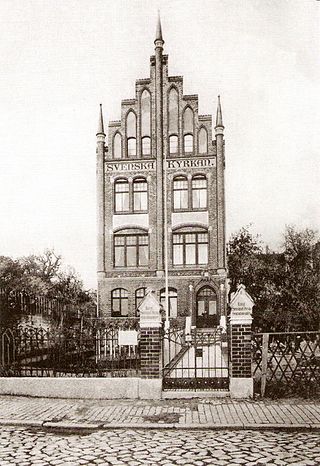
The Swedish Church is a former church building of the former Swedish State Church from the early 20th century in the St. Gertrud district of the Hanseatic city of Lübeck. It was profaned and converted into a residential building.
20. Kleverschusskreuz
The Kleverschusskreuz is a wayside cross from the first half of the 15th century in the Hanseatic city of Lübeck. The stone cross made of limestone showed pilgrims the way to the Wunderblutkirche in Bad Wilsnack (Brandenburg). One mile of the way to the Church of the Miracle Blood, which was often started barefoot, gave the pilgrim a day's indulgence.
21. St. Annen-Stein
The List of Archaeological Monuments in Lübeck lists the archaeological monuments of the Hanseatic City of Lübeck according to the status of the Archaeological Monument List of the Department of Archaeology and Monument Preservation of the Hanseatic City of Lübeck from 2018. The monuments are listed in the list of cultural monuments in Lübeck.
22. Pöppendorfer Ringwall
The Pöppendorfer Ringwall is a castle wall on the road from the village of Pöppendorf to the Waldhusen Forest. Pöppendorf is a part of the Lübeck district of Kücknitz in Schleswig-Holstein, Germany. It is one of the best-preserved and most handsome castle walls in East Holstein. In addition, it is considered a school example of Slavic castle walls.
23. Alt-Lübeck
Liubice, also known by the German name Alt-Lübeck, was a medieval West Slavic settlement near the site of modern Lübeck, Germany. Liubice was located at the confluence of the Schwartau with the Trave across from Teerhof Island, approximately four kilometres north of Lübeck's island old town. The residence of Henry, the Christian prince of the Obotrites, Liubice was destroyed after his death by the Rani pagans of Rugia.
24. Haus Hansestadt Danzig
The Museum Haus Hansestadt Danzig is located in Lübeck in the Engelsgrube in a brick building from the end of the 13th century. The museum was established in 1981/1982 by the Danziger Förderkreis e. V. The museum gives an impression of the culture of Gdańsk and the Gdańsk region up to the end of the Second World War through the arrangement and decoration of the rooms and the exhibits.
25. Sankt Bonifatius
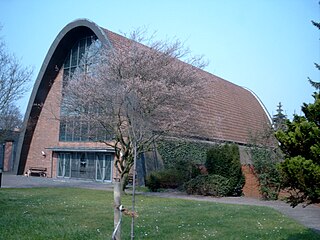
The church building of St. Bonifatius was built in 1952 by the architect Emil Steffann in the suburb of Lübeck-St. Lorenz-Nord was built as an emergency church, as the number of Catholics had increased fivefold with the refugees of the Second World War.
26. Europäisches Hansemuseum
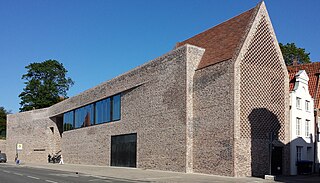
The European Hansemuseum is a museum in Lübeck, Germany dedicated to the history of the Hanseatic League. Covering an area of in total 7,405 square metres (79,710 sq ft), is the largest museum in the world specifically dedicated to this subject. The museum was opened in May 2015.
27. Burgtor
The Burgtor, built 1444 in late Gothic style, was the northern city gate of Hanseatic Lübeck, now in Germany. It is one of two towered gates remaining from the medieval fortifications, the other being the more famous Holstentor.
28. St.-Aegidien-Kirche
The St.-Aegidien-Kirche or Aegidienkirche is a church building in the north German city of Lübeck, dedicated to saint Giles. It is the smallest and easternmost church in the city centre. It is first mentioned as dedicated to St Giles in 1227 - this is unusual for a north German and may link it to an earlier 1172-1182 wooden church built under bishop Henry I, formerly the abbot of the abbey dedicated to the same saint in Braunschweig. The church's coat of arms includes a "T", short for "Tilgenkark", the Low German form of the church's name, and "St Tilgen" or "St. Illigen", the Low German forms of the saint's name.
29. Brahms-Institut an der Musikhochschule Lübeck
Brahms-Institut acquired the largest private collection of Johannes Brahms engravings, manuscripts and first and early prints in 1990. In addition to Brahms, the focus is on Robert and Clara Schumann, Theodor Kirchner, Joseph Joachim, and some lesser known performers and composers of the era. In addition to music manuscripts, the collection also includes correspondence, photos, and drawings.
30. Carlebach-Synagoge
The Lübeck Synagogue, today also called Carlebach Synagogue, is located in Lübeck's old town, St.-Annen-Straße 13, between the Evangelical Lutheran Aegidienkirche and the neighboring St. Anne's Monastery, which is now a municipal museum. It is the only completely preserved Jewish place of worship in Schleswig-Holstein and was named after its first rabbi, Salomon Carlebach (1845–1919).
31. St.-Gertrud-Kirche
The St. Gertrud Church in Lübeck is the parish church of the Protestant parish in the Lübeck district of St. Gertrud, built according to a design by the Charlottenburg architects Jürgensen & Bachmann, which is dedicated to Saint Gertrude of Nivelles. The patronage has been historical for the suburb on the castle field in front of the castle gate since the Middle Ages. In 1373, the Bishop of Lübeck, Burkhard von Serkem, consecrated the first St. Gertrude Chapel.
32. TheaterFigurenMuseum
KOLK 17 is a puppet theatre and museum in Lübeck in the south-east of Schleswig-Holstein. It combines a collection of puppet theatre comprising over 20,000 exhibits and a puppet theatre with permanent performances.
33. KZ Fürstengrube-Todesmarsch
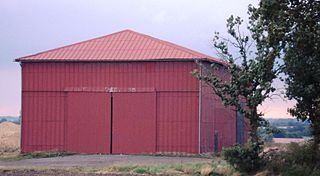
The Fürstengrube Concentration Camp Death March was a death march of concentration camp prisoners as part of the evacuation of the Fürstengrube concentration camp and other concentration camp prisoners. Lack of food, illness, exhaustion, abuse and murder claimed numerous victims on this death march from January to May 1945 with several intermediate stops.
Share
How likely are you to recommend us?
Disclaimer Please be aware of your surroundings and do not enter private property. We are not liable for any damages that occur during the tours.
